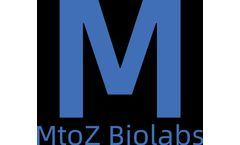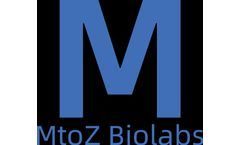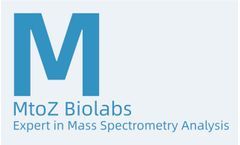Dna Protein Articles & Analysis: Older
29 articles found
Microarray printing is a high-throughput technique used to create arrays of biological molecules—such as DNA, RNA, proteins, or glycans—on a solid surface, usually a glass slide or membrane. ...
Let me tell you a story about how these remarkable protein catalysts are transforming the future of mRNA technology and, in turn, revolutionizing modern medicine. ...
It is mainly used in component separation: desalination, replacement of buffers, removal of harmful reagents, purification of biomolecules such as proteins, peptides, and polysaccharides, calculation of molecular size and molecular homogeneity, etc. ...
With technological advancements, we now have more novel avenues to choose from, such as recombinant proteins, engineered cells, and DNA encoding proteins, all of which can display a variety of epitopes or potential antibody recognition sites. Compared to these newer forms of antigens, peptides may be slightly lacking in epitope coverage, as they ...
This innovative process holds great promise in unlocking new possibilities in scientific research, paving the way for exciting advancements in the biotechnological landscape Messenger RNA plays a crucial role in the genetic code of all living organisms, transferring instructions from DNA to ribosomes for protein synthesis. Through custom mRNA production, ...
Protein-Protein Interaction databases primarily record experimentally validated protein interaction data. Here are some key Protein-Protein Interaction databases:BioGRID(Biological General Repository for Interaction Datasets)BioGRID is a database focused on biological molecular interactions, including ...
Upon autophagy initiation, microtubule-associated protein 1 light chain 3 (LC3) is converted from LC3-I to the lipidated LC3-II and anchored to the autophagic membrane. ...
What is CRISPRi? The dCas9 fusion protein targets DNA sequences through sgRNA, but the inactive dCas9 cannot catalyze DNA. Instead, a protein fused to dCas9 manipulates the transcription of the target gene. ...
The ubiquitination site of a protein refers to those specific amino acid residues on the protein molecule that can covalently bind with Ubiquitin. ...
It is mainly used in component separation: desalination, replacement of buffers, removal of harmful reagents, purification of biomolecules such as proteins, peptides, and polysaccharides, calculation of molecular size and molecular homogeneity, etc. ...
This information helps researchers optimize drug design and select the most promising candidates for further development. Protein-Protein Interactions Understanding protein-protein interactions is essential for deciphering cellular processes and developing targeted therapies. MST allows researchers to study these interactions ...
Introduction to Microbial Epigenetics Epigenetics has been defined as the study of stable alterations in gene expression potentials that arise during development and cell proliferation, or alterations in DNA function without alterations in DNA sequence. Modern epigenetic features refer to the alteration of DNA and/or associated ...
Transfection, the first step in the process, involves the introduction of a foreign plasmid (DNA molecule) into a host cell. The plasmid carries the gene coding for the protein of interest, and the cell's machinery copies this gene and uses it as a blueprint to manufacture the protein. This procedure is a delicate balancing act, with scientists ...
Therefore, biotinylation is widely used in biomedical fields, and biotinylated proteins are widely used in biotechnology as a molecular tool.What is ...
It forms a gel-like substance when mixed with water, making it ideal for applications in molecular biology, including gel electrophoresis, DNA isolation, and protein separation. l Carrageenan The structure of carrageenan, the main cell wall polysaccharide found in red algae, varies depending on the type of algae. ...
While the term microbiome does not only concern the microorganisms found in a specific environment but also includes the products of these microbes such as structural genes and proteins, metabolites, and other molecules produced as a result of the interaction of these organisms to the host or the environment. Another difference is that microbiota only includes living ...
GPE is an N-terminal tripeptide of a naturally occurring protein and insulin-like growth factor 1 (IGF-1) in the brain. Compared with the proline Cα of GPE, trofinetide has one more methyl group. ...
Protein-DNA docking is a complex and critical technique used in the field of structural biology. ...
Due to their high water content, hydrogels are able to form in the presence of cells, proteins and DNA. Among them, the versatility and excellent biocompatibility of PEG macromolecular chemistry have facilitated the development of numerous intelligently designed hydrogel systems for regenerative medicine applications. PEG hydrogels have been widely used for cell ...
It effectively acquires and analyzes biological data such as nucleic acid sequences and protein structures, so as to conduct comprehensive and accurate biological analysis. ...













